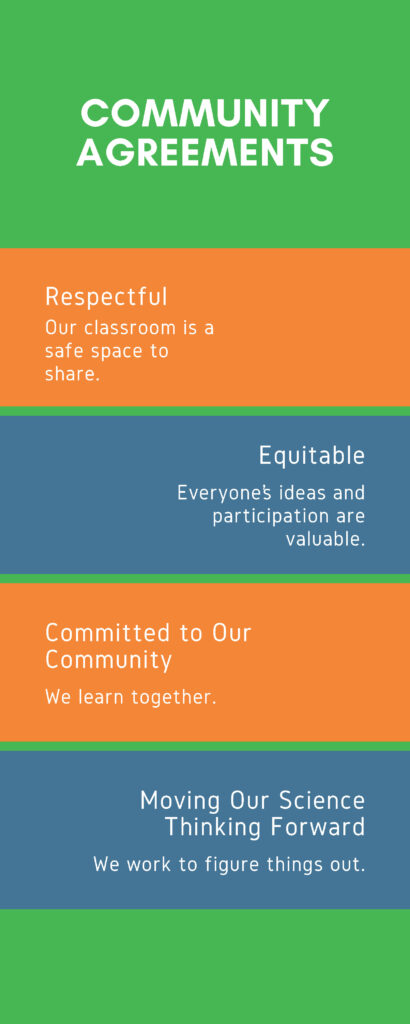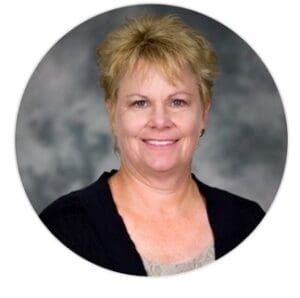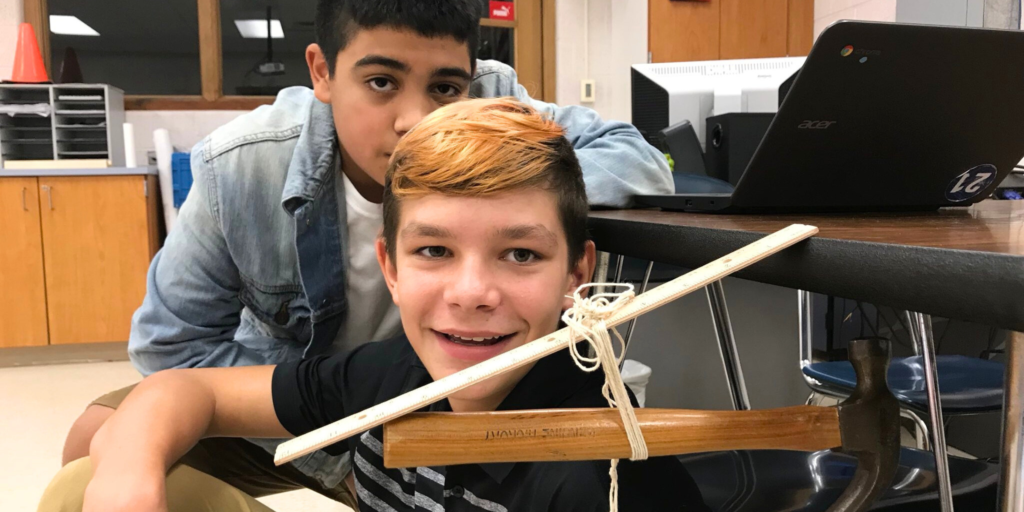Cultivating a Community of Learners in Science Education
Cultivating a Community of Learners in Science Education

Quick Take: The August 2024 Snapshot Series webinar Cultivating a Community of Learners, presented by Professional Learning Facilitator Michelle Tindall, asked how we can foster an equitable learning community where all students are engaged in constructing new knowledge. A community of learners supports students’ sensemaking with respectful relationships, common expectations, student contributions, and a growth mindset. In this webinar recap, Michelle describes how to introduce these elements into your instructional practice in a high school setting.
Cultivating a Community of Learners
As classrooms make the shift to three-dimensional instruction and place students at the center of their learning, the climate and culture of the classroom becomes increasingly more important. Nurturing a respectful classroom environment where students embrace a growth mindset and know their contributions are valued is no small task.
As teachers, when we commit to this work in the classroom, we create a community of learners who are ready to take on problem-solving, data analysis, arguing claims based upon evidence, and figuring out key concepts in science. This month’s webinar gave an overview of how community agreements, growth mindset, and respectful relationships can be used to a promote a community of learners in your classroom. If you missed the live interactive session, check out the webinar recording and read on for more insights and downloadable resources.
Why is it Important to Cultivate a Community of Learners?
The look and feel of science classrooms are changing as teachers implement student-centered instruction that engages students in making sense of phenomena around them as described in A Framework for K–12 Science Education. Student-centered instruction actively engages students in sensemaking, with teachers facilitating their learning. This changing landscape in the classroom is unfamiliar for many students and teachers.
High school students who have experienced more teacher-directed instruction during their PK-8 years are now being asked to embrace productive struggle, engage in rich sensemaking discussions, and work collaboratively with their peers and teacher to learn science content. Many of these students are attempting to do so without the benefit of a positive identity in science or a feeling of agency over their learning.
2024 Snapshot Series was designed to provide ideas and starting points for those interested in three-dimensional teaching and learning. The first two webinars, Making the Shift to Three-Dimensional Teaching and Learning and Productive Discussions in Science, kicked off the series and helped us better understand the changing roles of teachers and students in the student-centered science classroom.
Teachers who embark on this journey often comment that their student don’t talk and discussions don’t work. Teachers often report the same students raise their hand over and over; some students never talk; and students don’t talk to each other. How do teachers get students to talk, feel comfortable figuring out science, and use discussions as part of their learning?
Getting Started: Building a Community of Learners
One important first step is to work on building a community of learners where students feel comfortable collaborating with and talking to each other as they learn science together. Simply grouping students together in a class doesn’t ensure that they will form a productive learning community; students don’t come to our classrooms with the skills to do so. It is up to teachers to build a meaningful community, using activities designed to build relationships with and between students, co-create common expectations with students, and encourage risk-taking and a growth mindset.
Building relationships in the classroom will help you better understand your students’ cultures, background knowledge, and interests. For students, building relationships will also help them make connections with each other and feel safe in the community. An investment in building relationships early in the school year, and maintaining them throughout, will pay off for the rest of the school year. As you begin to build relationships in your classroom, consider encouraging students to talk to one another and work together.
- Keep the stakes low initially. Start with regular connector activities about topics of interest to students, not necessarily content-area topics.
- Mix up the groupings in your classroom early and often. Give students opportunities to get to know everyone in the class, not just those sitting near them or their friends.
- Establish routines and roles for individual, small-group, and whole-class activities. Give students an opportunity to collect their thoughts with a quick-write activity before sharing with others. Consider asking students to share with a partner or small group before with the whole class.
Develop Community Agreements

OpenSciEd Community Agreements
Community agreements promote common expectations that help your classroom community work together. Co-creating these agreements with students builds shared understanding and ownership of the agreements. These community agreements become even more important as we shift toward a student-centered classroom.
Community agreements in OpenSciEd, for example, attend to four categories, Respectful, Equitable, Committed to Our Community, and Moving Our Science Thinking Forward. Students are often familiar with the topics of respect and equity and what they look like in the classroom. The ideas about being committed to the community and moving science thinking forward could be new ones for science students.
Help them understand these ideas and develop a class set of indicators for each area. Ask students to individually write down what it would look like if:
- our classroom is a safe space to share,
- everyone’s ideas and participation are valuable,
- we learn together, and
- we work to figure things out.
Once students have their vision of the above statements, give them opportunities to share and come up with small-group indicators. The whole class can then agree upon their class community agreements.
Encourage a Growth Mindset
A growth mindset helps students become more comfortable with not knowing the answers yet. As students work to figure out phenomena and design solutions as part of three-dimensional learning, they will not know the answer yet, and will need to work together to develop a common understanding of key science ideas. A growth mindset will help them embrace the learning that occurs as they grapple with forming new understanding based upon evidence.
Carol Dweck spoke about growth mindset in this TED Talk, “The Power of Believing You Can Improve”. As teachers, we can use language and feedback in our classrooms that promote learning, celebrate effort and process, and encourage students to embrace productive struggle for learning.
Build a Learning Community
Three-dimensional teaching and learning changes the classroom environment to one that is engaging, collaborative and challenging. Building a learning community that is supportive, safe, and equitable provides all students with the opportunity to build deep understanding in science. Download the free resources and additional readings presented in the webinar below!
Join us for the next Snapshot series webinar for more insights!
Each Snapshot Webinar Series session will be an engaging, hands-on, interactive hour filled with valuable insights and tools designed to empower teachers with strategies to shift students' thinking from learning about science to figuring out science using curricula aligned with the Next Generation Science Standards (NGSS).
Three-Dimensional Assessments
Tuesday, October 29 7PM-8PM (EST)
How do we use three-dimensional assessments to inform instruction and support students’ growth?
About the Author: Michelle Tindall 
Michelle Tindall is a professional educator whose career focused primarily on teaching high school science and mathematics and facilitating professional learning in science, mathematics, and technology integration for over twenty years. She has been a science education consultant and university instructor, in the area of teacher preparation, since 2021. Formerly, she was a K-12 Math/Science Curriculum Coordinator and Secondary Curriculum Technology Integrator.
Michelle has promoted three-dimensional teaching and learning, student-centered instruction, and STEM education in her roles as a facilitator for OpenSciEd, Modeling Instruction, and NGSX. Michelle earned a B.A. in Chemistry and a M.A. in Secondary Education at Wayne State University.
* * * * * *




